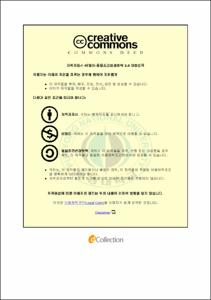아동이 지각한 교사의 훈육유형과 자아존중감과의 관계 및 문화성향의 중재효과
- Alternative Title
- Relationshipbetweendisciplinarystyleandself-esteem of teachers : Mediating Effect of cultural disposition
- Abstract
- 교사의 훈육유형에 따른 5개 집단(방임형 제외) 간의 집단비교에서는 아동의 자아존중감 모든 하위영역에서 유의미한 차이가 없는 것으로 나타났다. 또한 아동이 지각한 교사의 훈육유형과 자아존중감과의 관계에서 문화성향의 중재효과를 살펴보면, 가정적 자아점수와 학교 자아점수가 높은 아동은 교사의 훈육유형을 민주형, 전제형, 절충형으로 지각할 때 집단주의적 성향이 높았으며, 학교 자아존중감 점수가 높은 아동은 교사의 훈육유형을 지원형으로 지각했을 경우 집단주의적 성향이 두드러지게 나타났다.
또한 사회적 자아존중감 점수가 높은 아동은 교사의 훈육유형에 따라 여러 가지 상호작용 효과를 나타내었는데 특히 절충형으로 교사의 훈육유형을 지각한 아동은 개인주의적 성향이 높았으며, 전제형으로 지각한 아동의 경우 개인주의적 성향과 집단주의적 성향이 거의 동일하게 분포하였다.
Obtained results to study problem which this study intended to make clear are as followings:
First, we cannot find any significant difference in interrelation between teacher's disciplinary style and self-esteem in children's recognition, and it can be a very specific result that especially it has no any clear relationship with school self-esteem.
Second, when researching culture-oriented moderating effectiveness in the relationship between teacher's disciplinary style and self-esteem in child's recognition, the children who have high family self score and school self score showed collectivism strongly. Generally, the children who have high self-esteem score has high collectivism when recognizing teacher's disciplinary style as democratic type, autocratic type, and compromiser type, and the children who have high school self-esteem showed collectivism more when recognizing disciplinary style of teacher as supporter type.
Also, the children who have high social self-esteem indicated various interaction effectiveness according to teacher's disciplinary style, especially the children who recognize teacher's disciplinary style as compromiser type showed high individualism, and in case of the children who recognize as autocratic type, indicating individualism and collectivism ones showed almost same distribution.
Finally, the advice for follow-up study based on this study result is as following:
First, this study has subjected on 6 grades students, so it has the limitation that it could not low grade students and secondary school students. Therefore, there needs a study which can reflect various grades of students' recognitions.
Second, cultural disposition can be divided two dimension of collectivism and individualism and of verticality and horizontality, but this study was made only by dividing two dimension of collectivism and individualism, so there needs the study to reflect four dimension of cultural disposition.
- Issued Date
- 2009
- Awarded Date
- 2009. 8
- Type
- Dissertation
- Publisher
- 부경대학교 교육대학원
- Alternative Author(s)
- Jung, Jae-Min
- Affiliation
- 부경대학교 교육대학원
- Department
- 교육대학원 교육심리전공
- Advisor
- 이희영
- Table Of Contents
- Ⅰ. 서론 = 1
1. 연구의 필요성 및 목적 = 1
2. 연구문제 = 5
3. 용어의 정의 = 6
Ⅱ. 이론적 배경 = 8
1. 훈육 = 8
2. 자아존중감 = 16
3. 문화성향 = 22
Ⅲ. 연구방법 = 28
1. 연구대상 = 28
2. 조사도구 = 28
3. 자료 분석 방법 = 31
Ⅳ. 연구결과 및 논의 = 33
1. 연구결과 = 33
2. 논의 = 42
Ⅴ. 결론 및 제언 = 47
참고문헌 = 49
부록 = 56
- Degree
- Master
- Files in This Item:
-
-
Download
 아동이 지각한 교사의 훈육유형과 자아존중감과의 관계 및 문화성향의 중재효과.pdf
기타 데이터 / 1.2 MB / Adobe PDF
아동이 지각한 교사의 훈육유형과 자아존중감과의 관계 및 문화성향의 중재효과.pdf
기타 데이터 / 1.2 MB / Adobe PDF
-
Items in Repository are protected by copyright, with all rights reserved, unless otherwise indicated.